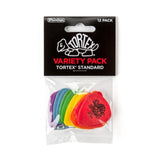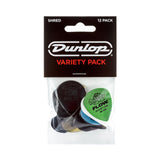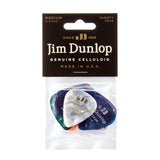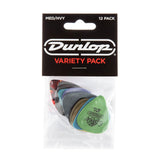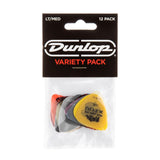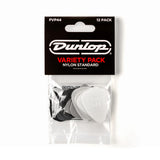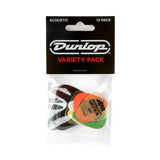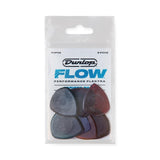We’ve covered a lot of aspects of guitar electronics and wiring here at Northwest Guitars. Deep dives into the usual suspects such as pickups, capacitors, and pots, and how they shape your guitar tone. One thing we haven’t covered however is resistors. Using resistors in guitars can open up a raft of new sounds in your guitar, particularly when splitting humbuckers. Ready for another science lesson? Let’s get started then…
What is a Resistor?
A resistor’s purpose can easily be determined by its name alone. Simply put, it ‘resists’ electrical flow by restricting the amount of current that can pass through it. Resistor values are measured in ohms (Ω) and will typically be measured in kΩ or MΩ. Resistor values are indicated on the resistors themselves through a colour code system, and most resistors will usually have between 4 and 6 bands.
The first three bands indicate the first three digits. The fourth band tells you how many zeroes are present. The fifth indicates the tolerance of the resistor, also as it's 'precision’. If no fifth band is present then the tolerance defaults at ±20%. A special set of colour codes are used to identify the tolerance if present.
- Silver: ±10%
- Gold: ±5%
In the example image below, we have a resistor, see if you can work out its resistance by utilising the information above to find the amount. If you want the answer, just click on the image to be taken to the product page!
Resistors in Series
With resistors connected in series, their combined resistance equals the sum of the individual resistances. For example, if two resistors are connected in series, you determine their combined resistance by adding the individual values together.
For example: R = R1 + R2.
This also applies when you connect multiple resistors: R = R1 + R2 + R3
Resistors in Parallel
When using resistors in parallel things get a little more complicated. You must perform several calculations to determine the overall resistance. As we can see below, we must multiply the individual values of the resistors together, then separately add them together. With these two values, divide one by the other to determine the overall resistance of resistors in parallel.
If you have more than two resistors in parallel, then it gets even more complicated! You are required to divide each resistor value by one independently, add the numbers together, then divide by one again to get your resistance measurement.
Resistors in Guitar Circuits
Had enough yet? Now that we’ve got the maths and science of resistors out of the way, lets get onto the good stuff, how we apply resistors in guitar circuits!
Treble Bleed Circuit
One of the most common ways to utilise resistors in guitar circuits in the well-known treble bleed circuit. It’s a simple, yet useful mod that allows you to prevent the usual loss of high frequency information when you roll down the volume control. By combining a resistor with your tone capacitor and volume pot, you will prevent the loss of high frequencies, resulting in a brighter sound as you roll down the volume.
There are many combinations of resistor values you can use for this purpose, and this is largely down to personal taste as the maths can vary depending on your pickups, pot values, and capacitor values.
HS Pickup Configurations
Another useful way to apply resistors in guitar wiring is when you have a HS pickup configuration. Ideally a humbucker works best with a 500k pot, whereas a single coil sounds its best with a 250k pot. As you only have one volume, you either have to sacrifice the tonality of one of your pickups, or you can introduce a resistor into the circuit.
The way this works is that one side of the pot is a 'hot', and one side of the pot is 'ground'. By attaching one leg of a resistor from the 'hot' of a pickup, and one leg to 'ground' you’re putting that resistor in parallel. By placing the resistor in parallel, your bridge pickup will see a 500k pot, whereas the neck pickup will see 250k. This means you get great sounding pickups in both positions.
There is however a downside to this method. When you select the middle position you'll be introducing another resistor into the circuit, and thus darkening the overall sound by a significant amount. As per the example below, your Neck Pickup (500K) Your Bridge Pickup (500K) and the Parallel Resistor (~470K) are all active, so when you combine your neck and bridge using this resistor hack, the middle position will see a 163K pot, resulting in a dark sound.
Coil Tapping/Coil Splitting
Quickly becoming a staple on humbucker equipped guitars, splitting or tapping the humbucker refers to the ability to only utilise one coil from your humbucker, giving you access to a wider variety of sounds in the process. Removing one coil from your humbucker can often deliver a weak-sounding single coil sound, so to get around this you can add a resistor to the circuit, which will ensure your tone is strong once the humbucker has been coil tapped.
This method, also known as a 'Partial Tap Resistor', works by having resistor connected to the ground as per the above diagram. By introducing the resistor into this circuit, you're preventing the flow of electricity that would ordinarily be sent to the ground. Typically around 50% of electrical flow will go to the ground, but with a resistor, that number is around 33% instead. This means when you pull the knob up to coil tap a humbucker there is less signal loss, and thus you get a much stronger single coil tone.
Reducing Pot Values
Another excellent way to utilise resistors in guitar circuits is to change your pot values. There are a variety of reasons you might need to do this, whether you only have a 500k pot and need a 250k, or you want to get a more unique value for your pot for a different sound, for example changing a 500k pot to a 333k pot.
If you have a pot with a value of 500k and you add a 470k resistor, using the equation we mentioned earlier your combined resistance will come in at 242k, completely changing the sound of the pot. These techniques are great if you want to tame the highs of a particular pot, or you just want to experiment with values to create a completely unique sound!
In Conclusion
Using resistors in guitar circuits takes a little time to get used to, particular memorising those equations and resistor value bands. Once you have a good grasp of it however, it’s actually pretty simple to start utilising them in your own guitar circuits and there is a wealth of unique guitar sounds you can come up with!
Despite this article being heavy on the maths, we’re firm believers in experimentation, and messing around with different resistors, pots, and capacitors without thinking too much about the values can yield some awesome auditory after-effects.
Learn More
To understand resistors in guitar circuits, you’ll need to know all about Guitar Potentiometers.
If you want to learn more about guitar electrics, our Tone Capacitor Guide will give you the low down.
Get the knowledge on the unique and unusual Gold Foil Pickups.



















